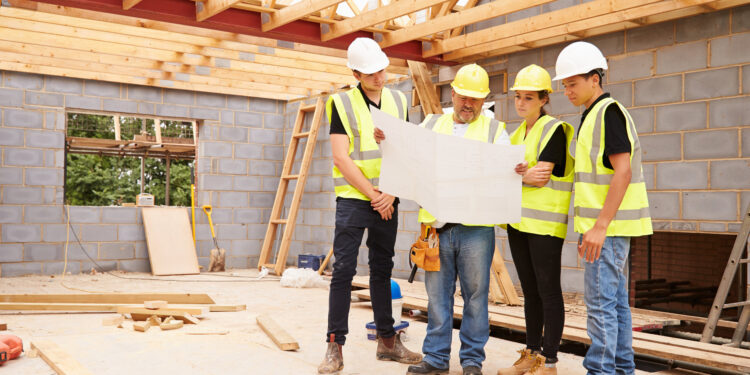As Innovative tools transforming the home building industry takes center stage, this opening passage beckons readers into a world crafted with good knowledge, ensuring a reading experience that is both absorbing and distinctly original.
The construction landscape is evolving rapidly with the infusion of innovative tools, reshaping traditional practices and paving the way for a more efficient and sustainable future in home building.
Introduction to Innovative Tools in Home Building
Innovative tools in home building refer to advanced technologies and equipment that are revolutionizing the construction industry. These tools are designed to streamline processes, improve efficiency, and enhance the overall quality of construction projects.Key benefits of using innovative tools in home construction include increased productivity, reduced labor costs, improved safety measures, and higher precision in project execution.
These tools also enable builders to meet deadlines more effectively and deliver projects with greater accuracy.
Examples of Popular Innovative Tools
- 3D Printing Technology: 3D printers are being used to create components of homes, such as walls and foundations, in a fraction of the time it would take using traditional methods.
- Drones: Drones are utilized for aerial surveys, site inspections, and monitoring construction progress, offering a more efficient and cost-effective way to gather data and assess project developments.
- Building Information Modeling (BIM) Software: BIM software allows architects, engineers, and builders to collaborate on a digital model of a building, enabling them to identify potential issues and plan construction processes more effectively.
- Robotic Bricklayers: Automated bricklaying machines are being used to lay bricks quickly and accurately, reducing manual labor and ensuring precise construction outcomes.
Automation and Robotics in Home Building
Automation and robotics have significantly transformed the home building industry by streamlining the construction process and improving efficiency. These innovative tools have revolutionized traditional construction methods, leading to faster project completion times and higher precision in building.
Role of 3D Printing in Home Building
D printing has emerged as a game-changer in creating components for home building. This technology allows for the rapid prototyping and production of complex architectural elements with intricate designs. By using 3D printing, construction companies can reduce material waste and achieve greater customization in building structures.
Sustainable Materials and Green Technologies
When it comes to home construction, the use of sustainable materials and green technologies has been gaining momentum in the industry. These innovative solutions not only help reduce the environmental impact of building homes but also contribute to energy efficiency and overall sustainability.
Eco-Friendly Materials Revolutionizing the Industry
One example of eco-friendly materials making waves in the home building industry is bamboo. Known for its rapid growth and renewability, bamboo is being used for flooring, furniture, and even structural elements in homes. Its strength and durability make it a popular choice for environmentally conscious builders.
- Bamboo: A sustainable alternative to traditional wood, bamboo is fast-growing and has a lower environmental impact.
- Recycled Materials: From reclaimed wood to recycled glass countertops, using materials with a previous life helps reduce waste and energy consumption.
- Green Insulation: Materials like cellulose insulation made from recycled paper or soy-based foam insulation provide energy efficiency and sustainable options for homes.
Impact on Energy Efficiency
The incorporation of sustainable materials and green technologies in home construction has a significant impact on energy efficiency
. By using materials that are renewable, recycled, or have a lower carbon footprint, homes can reduce energy consumption and lower their environmental impact.
Green technologies such as solar panels, energy-efficient appliances, and smart home systems further enhance the energy efficiency of homes, making them more sustainable in the long run.
Virtual Reality and Augmented Reality in Home Design
Virtual Reality (VR) and Augmented Reality (AR) have revolutionized the home building industry by offering immersive and interactive experiences during the design and planning stages. These technologies provide clients and builders with a realistic visualization of the project, allowing them to make informed decisions and modifications before construction begins.
Enhanced Visualization
Using VR and AR in home design enables clients to walk through a virtual representation of their future home. They can explore different layouts, materials, and finishes, getting a clear idea of how the final product will look and feel.
Builders can also use these technologies to identify potential design flaws and make adjustments early on, saving time and resources.
Advantages of VR and AR
- Improved Communication: VR and AR facilitate better communication between clients, builders, and designers, ensuring everyone is on the same page regarding the design and expectations.
- Cost and Time Savings: By detecting errors and making changes in the virtual space, costly mistakes during construction can be avoided, leading to savings in both time and money.
- Personalized Experience: Clients can customize their home design in real-time using VR and AR, making the process more engaging and tailored to their preferences.
- Sustainability: VR and AR can simulate the use of sustainable materials and energy-efficient technologies, helping clients make environmentally conscious choices in their home design.
Smart Home Integration and IoT Devices
Smart home integration and IoT devices play a significant role in modern homes, revolutionizing the way homes are built and operated. These technologies offer a level of convenience and efficiency that was previously unimaginable.
IoT Devices in Home Building
- Smart Thermostats: IoT-enabled thermostats can learn the homeowners' preferences and adjust the temperature accordingly, leading to energy savings.
- Smart Lighting: Lights that can be controlled remotely through a smartphone app, allowing users to customize the lighting based on their activities or mood.
- Smart Security Systems: IoT devices like smart cameras and doorbells provide homeowners with real-time monitoring and alerts, enhancing home security.
Benefits of Smart Home Integration
- Convenience: Homeowners can control various aspects of their homes remotely, such as temperature, lighting, and security, enhancing convenience and comfort.
- Energy Efficiency: IoT devices help in optimizing energy consumption, leading to lower utility bills and reduced environmental impact.
- Enhanced Security: Smart home integration provides advanced security features, such as motion sensors, smart locks, and surveillance cameras, increasing the safety of the property.
Conclusion
In conclusion, the integration of innovative tools in the home building industry signifies a transformative shift towards smarter, greener, and more technologically advanced construction practices. Embracing these tools not only enhances efficiency but also sets the stage for a new era of creativity and sustainability in home design and construction.
FAQ Explained
What are some benefits of using innovative tools in home construction?
Innovative tools streamline processes, improve efficiency, reduce waste, and enhance precision in construction projects.
How do sustainable materials and green technologies impact energy efficiency in homes?
Sustainable materials and green technologies help reduce energy consumption, lower utility costs, and create healthier living environments by promoting eco-friendly practices.
What role do automation and robotics play in revolutionizing the construction process?
Automation and robotics speed up construction timelines, reduce labor costs, improve safety, and enable intricate designs that were previously challenging to execute.







